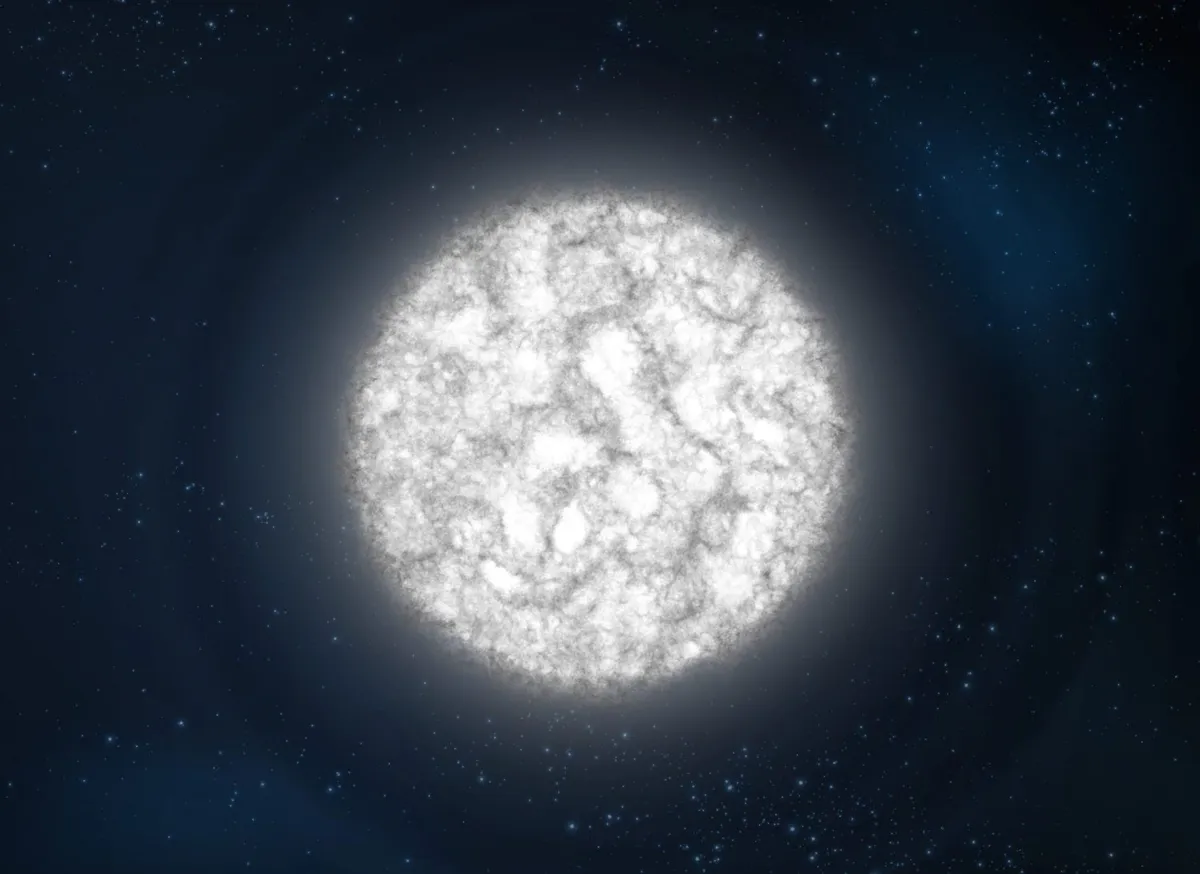Not far from our Solar System, the remnant of a dead star is devouring an object that's strikingly similar to Pluto.
The Hubble Space Telescope has given astronomers a view of this cosmic consumption with its ultraviolet vision.
White dwarfs, the sign of stellar death
A white dwarf is the final stage of a Sun-like star's life, after it runs out of fuel.
The star begins to expand, loses its outer layers and becomes an Earth-sized stellar remnant.
But that doesn't mean a white dwarf can't be just as destructive as it was in its glory days.
Astronomers observed a white dwarf about half the mass of our Sun, packed into a body about the size of Earth, and made a surprising discovery.
This dense object has a strong gravitational tug, which has pulled in and torn apart an icy body that resembles Pluto in our own Solar System.
Pluto is a dwarf planet and a Kuiper Belt Object, the Kuiper Belt being an icy ring of debris on the edge of our Solar System.

Seeing the chaos unfold
The scientists behind the study used the Hubble Space Telescope to analyse the chemical make-up of the doomed object, as it was torn apart and its fragments rained down onto the white dwarf.
As they did so, they made an unexpected discovery: so-called 'volatiles' – substances with low boiling points – including carbon, sulphur, nitrogen and a high oxygen content suggesting water, too.
"We were surprised," says Snehalata Sahu of the University of Warwick in the UK, who led analysis of the Hubble study.
"We did not expect to find water or other icy content. This is because the comets and Kuiper Belt-like objects are thrown out of their planetary systems early, as their stars evolve into white dwarfs. But here, we are detecting this very volatile-rich material.
"This is surprising for astronomers studying white dwarfs as well as exoplanets, planets outside our solar system."

How Hubble's vision helped
The team used Hubble’s Cosmic Origins Spectrograph to discover the fragments of the smaller body are made of 64% water ice.
And the fact they detected so much ice means that the fragments must have been part of massive object that formed far out on the edges of the star system: just like the Kuiper Belt in our Solar System.
Hubble data shows the object may have been like Pluto.
The team also found a large amount of nitrogen. In fact, it's the highest fraction of nitrogen ever detected in a white dwarf debris system.
"We know that Pluto's surface is covered with nitrogen ices," says Sahu.
"We think that the white dwarf accreted fragments of the crust and mantle of a dwarf planet."
What made it possible was Hubble's ability to see in ultraviolet light, as the phenomenon would have been difficult to see in optical light.

7activestudio / Getty Images
A vision of the death of our Solar System?
This white dwarf system is only 260 lightyears away, which is not far in cosmic terms.
It was once a star like our own Sun, and probably hosted planets and had a sort of 'Kuiper Belt', like our own Solar System.
Does this mean it could provide us a glimpse as to what will happen to our Solar System billions of years from now?
When our Sun collapses to a white dwarf, Kuiper Belt objects may be pulled in by its gravity, as likely happened here.
"These planetesimals will then be disrupted and accreted," says Sahu.
"If an alien observer looks into our Solar System in the far future, they might see the same kind of remains we see today around this white dwarf."

Now the team hope to use the James Webb Space Telescope to study the object in more detail.
Webb could find more molecular features of volatiles like water vapour and carbonates by observing the white dwarf in infrared.
"These types of studies will help us learn more about planet formation. They can also help us understand how water is delivered to rocky planets," says Sahu.
"We observed over 500 white dwarfs with Hubble. We’ve already learned so much about the building blocks and fragments of planets, but I’ve been absolutely thrilled that we now identified a system that resembles the objects in the frigid outer edges of our Solar System," says Boris Gänsicke, University of Warwick, principal investigator of the Hubble program that led to the discovery.
"Measuring the composition of an exo-Pluto is an important contribution toward our understanding of the formation and evolution of these bodies."

